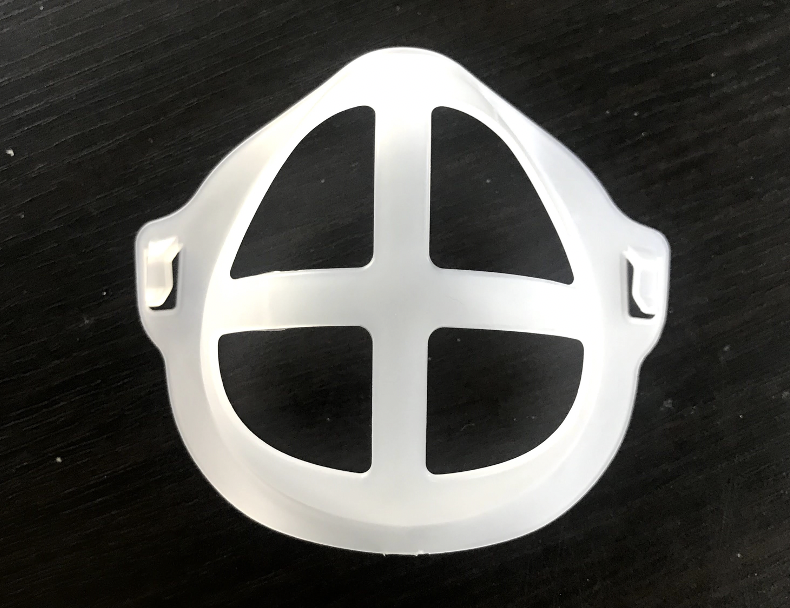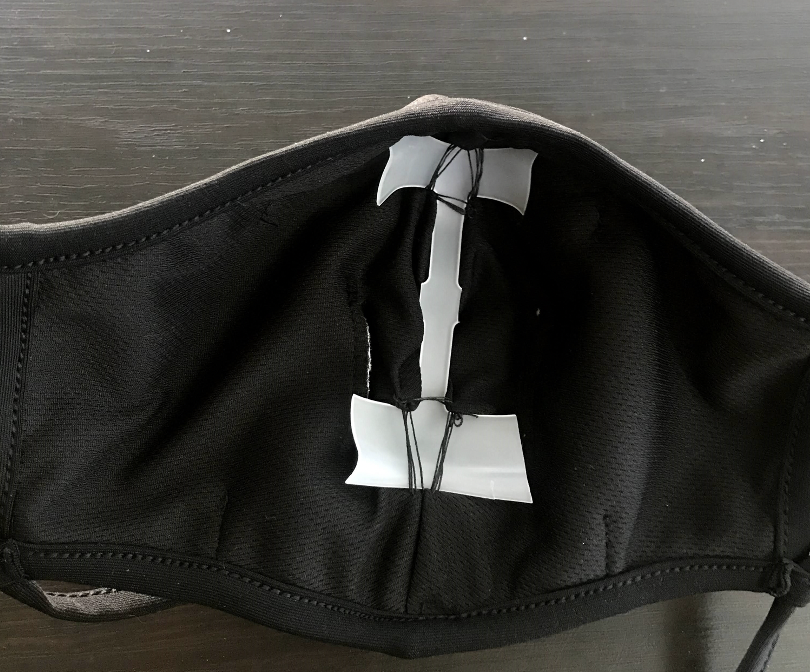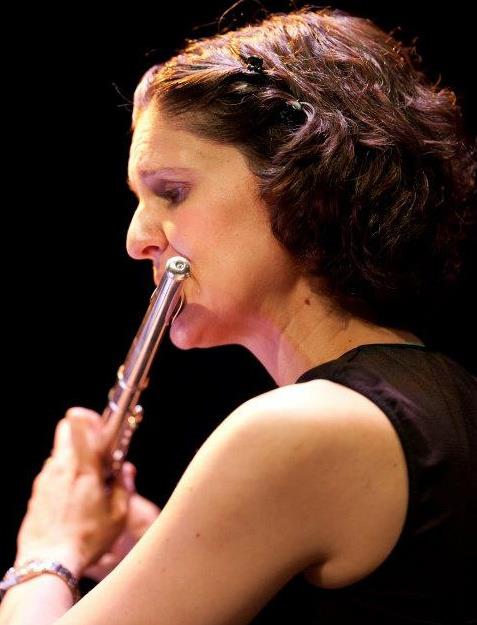Flute Tools in the Age of COVID-19: Examining Practicality
By Michelle Barraclough, MacKenzie Kyzer, and Alydia Marangoni
In this age of making music during COVID-19, there are a multitude of screens, shields, masks, and other devices that claim to allow us to play our flute more safely. The scientific merits of these devices are still being discovered, but what about the practicality of them?
Our campus returned to classes in the fall with in person instruction for the most part and students wearing masks during regular lectures. But what about flute playing? I (Michelle) asked the students in my Flute Pedagogy class (MacKenzie and Alydia) to weigh in on some of the options, purely from a practicality standpoint. We are not scientists and cannot recommend which device is the safest. Instead, we offer our discoveries about the pros and cons to each device.
The Win-D-Fender
According to their website (win-d-fender.com), the idea for the Win-D-Fender came about in the late 1990s after the inventor struggled to play his flute at an outdoor venue on a windy day. The plastic device clamps around the flute head joint and blocks the wind that would disturb the player’s airstream. Due to the theories that COVID-19 is spread by droplet and aerosols, many are turning to this device with the thinking that it can serve as a shield from the flutist’s airstream. It retails at $40-50.
MacKenzie: The Win-D-Fender attaches discreetly to the headjoint. It preserves the flute tone for the most part, but I did have some issues with muffling the sound in the third octave notes. It does allow you to play and project your sound outdoors, the purpose for which it was designed. There is nothing covering your face or hindering your embouchure while playing. The ventilation holes in the front of the device are pointed so the air would travel upward and not outward. It’s important to keep in mind that it was not originally designed for COVID use and it does not cover your nose at all.
Alydia: You can move your flute into playing position normally with the Win-D-Fender. It does not add any noticeable weight to the flute. You do need to be careful attaching it to your flute—if you are careless you could scratch the flute. I liked that nothing was covering my face when I was playing.
Michelle: I was pleasantly surprised with the quality of the construction of the Win-D-Fender. It’s well made, sturdy, and comes with its own bag for storage. It can be easily cleaned by wiping it with a wipe or with a damp cloth. Several of my students felt that the price was a bit high for their college student budget.
Flute Mask:
Our school bought several masks for instrumentalists that allow them to play while masked. Our flute masks came from G2 Performance (G2Performance.com). The flute mask retails for $16.95. It’s also possible to create your own by cutting slits in a mask or trying to slide the flute underneath a regular mask.
Alydia: The mask certainly covers your face and the flute effectively and playing is mostly uninhibited. In fact, this mask covered my face too well—it was large on my face and kept getting near the bottom of my eyes. I also found that the inner layer of material bunched down into the embouchure hole, so I couldn’t play. I found it difficult to maneuver the flute in and out of the mask: I had to take the mask off, slide the flute in, and then put it on my face. Once the flute is positioned in the mask, you can’t put down your arms when resting.
MacKenzie: I felt my breathing when playing was more frequent and shallower with the mask on. The condensation built up very quickly in my mask, which was made of polyester.
Michelle: I had the same issue as Alydia with the mask being much too large for my face and having the material bunch up over the embouchure hole. I attempted to fix that issue by modifying my mask. I cut apart a silicone mask bracket and sewed a piece of it inside the mask. This allowed the material to stand out away from my face and keep it off the flute. Since my sewing job is not the greatest, I don’t know how this will hold up in a washing machine.

Flute mask

Silicone mask bracket (unaltered)

Flute mask with altered silicone bracket sewn inside
Face Shield
Michelle: Plastic protective face shields are used in numerous healthcare jobs. I was asked to wear one for certain lecture classes where it was necessary for students who needed to lip read. When I tried playing the flute while wearing the shield, the first discovery was that it was LOUD. The sound reflected immediately back at me and I lost some of the harmonic depth. I felt that holding the flute underneath the shield changed my posture and stance somewhat. I had several vision issues with the face shield: the glare off the shield and with my glasses made seeing things very difficult for me.
T-shirt or bag around the instrument
Michelle: Another colleague asked me to try playing my flute while the instrument was covered with a T-shirt, because her child’s school was requiring their woodwind students to have bags or coverings on instruments. I positioned the T shirt so that the neck of the shirt was at the barrel. I put my hands in the sleeves of the shirt to play. It is a workable solution, and a clip or rubber band could be used to hold the shirt on the instrument. Again, it is difficult to quickly get into playing position. I am concerned about the shirt trapping moisture in the pads.
As we worked to create this article, more devices have entered the market, including ones that cover the end of the foot joint. While we cannot definitively say which devices offers more protection, we hope flutists will be able to take advantage of some of the options available to them to continue making music in this challenging time. Of course, we all long for the day when we can return to playing our flutes normally and making music with our friends and colleagues. We urge everyone to continue making music safely and as best they can.

Michelle Barraclough is an adjunct professor of flute at Lebanon Valley College (LVC) in Annville, PA. She teaches flute, courses in flute literature, pedagogy, music appreciation, and is the director for the college flute ensemble.

MacKenzie Kyzer is a senior music education major at LVC from Mechanicsburg, PA. She holds office in collegiate chapter of NAfME (National Association for Music Educators). She participates in marching band, concert choir, chamber choir, flute ensemble, orchestra, chamber winds at LVC.

Alydia Marangoni is a sophomore music education major at LVC from Chambersburg, PA. She participates in marching band, orchestra, concert choir at LVC.

Great article! I have worked with some of the devices mentioned. I have used a baby sock on the end of the flute at the end of the footjoint. Also, I have used a dish hand towel to cover the keys from the barrel to the end of the footjoint. It is even possible to play with the regular surgical mask, but the part does need to stay inflated, and not the have the mask hitting the mouth literally. If that happens, there will be no sound.
What is your suggestion to avoid a potential infection from the flute we receive back from the repair shop after the annual adjustment. Is there a sure way to disinfect it?
Thank you.
Unfortunately, we are not medical providers and cannot provide answers to your question.
[…] professor of music, and students MacKenzie Kyzer ’21 and Alydia Marangoni ’22 published “Flute Tools in the Age of COVID-19 Examining Practicality” in the December issue of The Flute Examiner. The students, part of Barraclough’s fall Flute […]